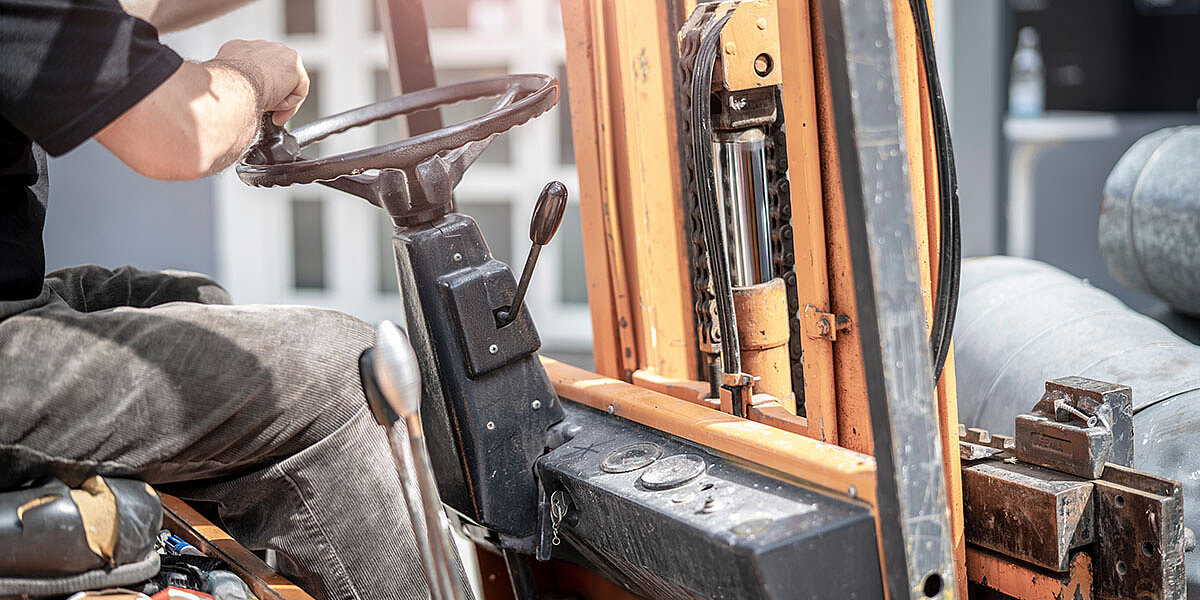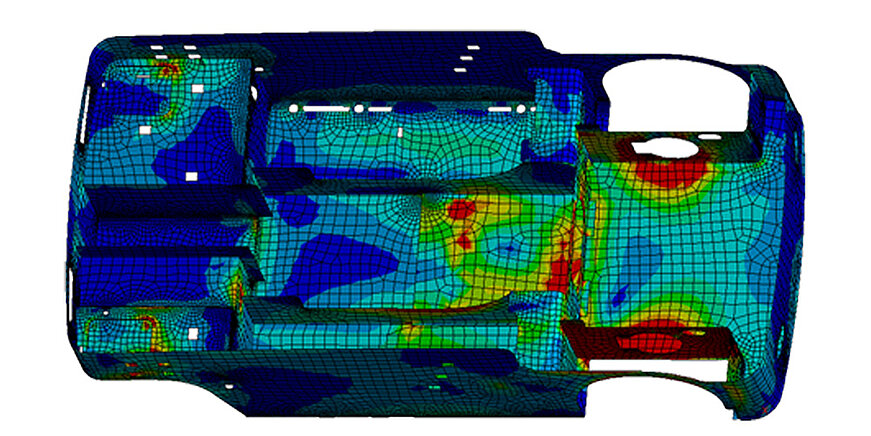Intralogistics

Strength verification of industrial trucks, robots and racks using the finite element method
Simulation using the finite element method (FEM) is penetrating more and more areas and supplementing experimental testing.
What is intralogistics?
Intralogistics refers to the logistical flows of materials and goods that take place within a company's premises. This requires racks, shelves, high-bay warehouses, robots, industrial trucks, forklifts, lifting platforms and everything else that crawls and flies around in order to store parts in a factory or warehouse, to move them or to bring them from A to B.
The video from Mitsubishi https://www.youtube.com/watch?v=wQ8TE-oXnmE shows what nonsense can be done with forklift trucks, for example. Whether it's destroying entire high-bay warehouses or even impaling cars. After all, forklifts can reach a top speed of up to 25 km/h, which is enough to make the vehicle and the load tip over when cornering.
However, many of the uses shown in the video fall more into the realm of unpredictable misuse. At least I haven't come across any calculated evidence of a large forklift carrying a small forklift with a payload. I think that belongs more in the category of "gross mischief". But if you want to prove something like this mathematically, we at Merkle & Partner are ready 😊
Task of the simulation
The task of the simulation is to ensure that all components are sufficiently dimensioned for regular use, but also in the event of foreseeable misuse, by means of strength verifications, dynamic investigations (e.g. driving over thresholds), stability verifications (stability considerations, e.g. with an extended lifting platform).
For this purpose, both the load-bearing components and the connecting elements such as bolts and weld seams are examined and evaluated mathematically using FEM. The evaluation is usually carried out according to the FKM guideline, the bolts are evaluated according to VDI 2230.
In the following, some load scenarios are compiled that can be considered in the FEM calculation of industrial trucks:
- Lifting and accelerating loads
- Protection in case of falling loads
- Unstable equilibrium in case of sideways tipping or tilting over the axles
- Acceleration, braking, cornering
- Crossing a threshold
- Driving against obstacles, forwards, backwards or diagonally
- Getting on and off the vehicle
- Foreseeable misuse loads (where can the driver climb on)
- Staggering of the driver in the cabin, against doors, etc.

The various tipping scenarios and crash behaviour are often still demonstrated purely experimentally, but here too simulation offers more and more possibilities. The advantage of FEM simulation in the case of tipping or a crash is that an overturned vehicle is set up again much faster in the computer than in reality. Also, the bits and bytes are not damaged in a virtual crash, while the physical hardware is destroyed in extreme cases.
High warehouses can sometimes be moved on rollers and can tip over. Profiles of shelves can buckle and collapse if the load is too high. And then there is the behaviour in an earthquake....
Here, too, there are corresponding standards such as the Eurocode, IBC or DIN EN 16681 that must be complied with.
In the case of robots, the acceleration loads also come into play, which arise due to the movement and can sometimes amount to more than 5 g. Often, however, the safety fences and protective enclosures must also be considered here, which should be able to tame an incorrectly programmed robot that has gone through.
And lightweight construction?
The topic of weight saving and lightweight construction is also becoming more and more important. Aerial work platforms in particular like the centre of gravity to be as low as possible so that they are stable, and at the same time the basket should not sway too much with the employee, which is a question of rigidity. Both are topics that are predestined for computational optimisation.
Merkle & Partner has been dealing with the calculation of vehicles or equipment in intralogistics for more than 30 years and can calculate the most complex models here. You drive a forklift truck into a high-bay warehouse and want to know what happens, no problem. But we also take on the far more frequent case that you need to prove components, assemblies or machines conform to standards or to eliminate or optimise weak points. Increasing automation and the autonomous behaviour of robots and industrial trucks create new exciting load cases.
Even in cases of damage, e.g. when weld seams crack during use by your customers, we help you find the cause and work with you to find constructive solutions.
Your Stefan Merkle

PS: If you are also interested in the climatic conditions in your halls, this is a topic for our CFD flow department: feel free to read my blog https://www.merkle-partner.de/en/news/blog/cooling-freezing-and-icing-for-foodstuffs, where we look at entire logistics centres.